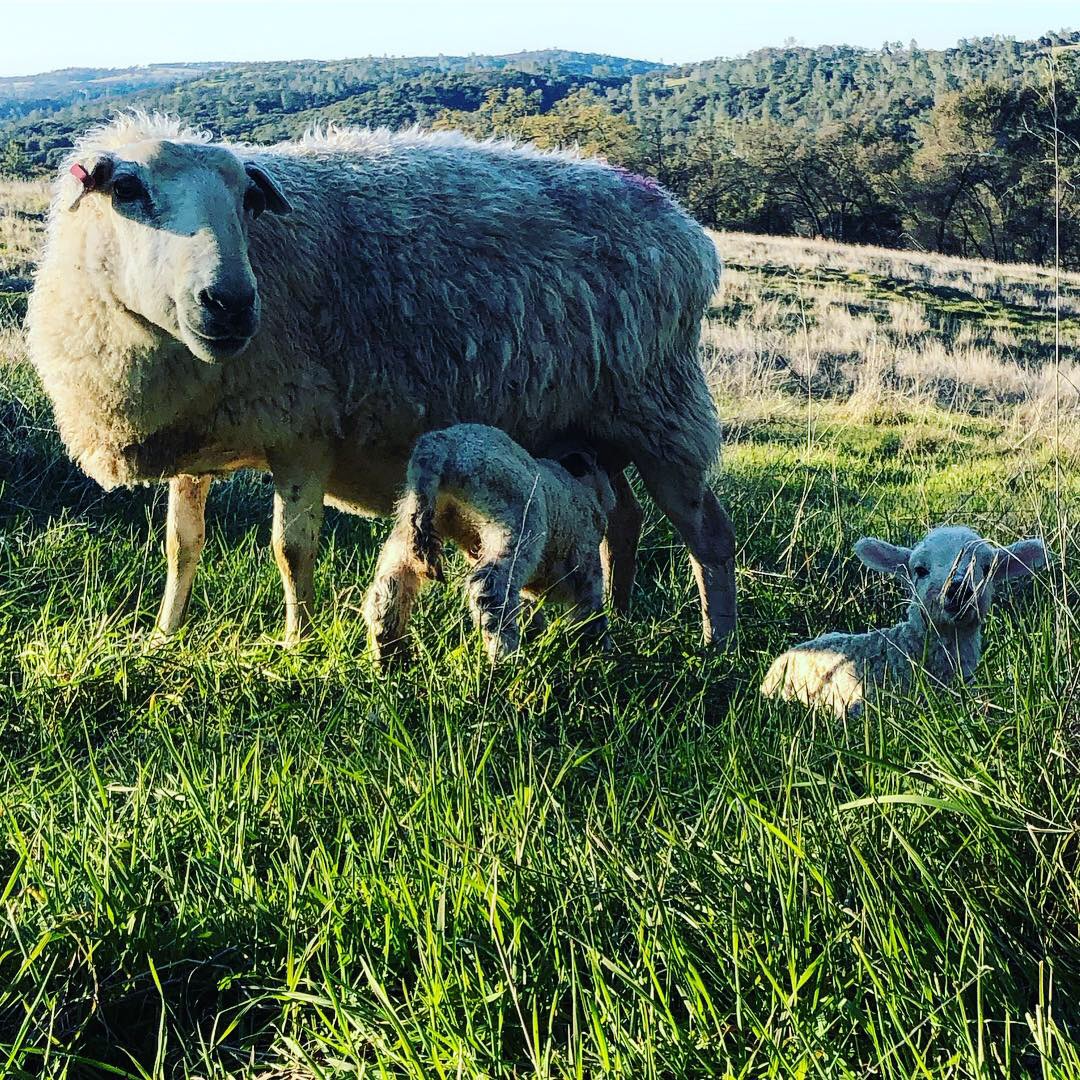The Rites of Spring (Lambing)
Contributed by Dan Macon
So let’s get this out of the way right up front – it’s not springtime yet. According to the calendar – and the weather – we still have at least 4 weeks of winter. And yet because our ewes have started lambing, I’m in a springtime mood!
We time our lambing to coincide with the onset of late winter and early spring grass growth. Ewes that are nursing lambs need almost twice as much high quality forage as they do when they aren’t nursing. Green grass, when it begins growing rapidly after a winter dormancy, provides nearly all the nutrition that a lactating ewe requires. My basic job as a shepherd is to balance the nutritional demands of my sheep with the greatest supply of high quality forage. In a normal year (whatever that is any more), our grass starts to grow rapidly in late February or early March.

Photo by Kaleiah Schiller
In addition to the new lambs that have arrived in the last 8 days, I see other signs of impending spring. Yesterday, as I assisted a ewe in delivering her second lamb (an enormous ram lamb who was in no hurry to be born), a flock of Sandhill cranes flew overhead, returning north. Today, as I put up electric fence for the next pasture, I noticed buttercups blooming. And the daffodils have started blooming at home.
Even with these signs of springtime, we know that winter weather can still impact our operation. I keep a close eye on the weather forecast during lambing. If we know we’re going to get a significant storm, we move the ewes into a paddock with more natural shelter (trees and leeward slopes). When rain is in the forecast, we put raincoats (biodegradable plastic jackets, called “LambMacs”) on the youngest lambs to keep them warm and dry. In especially inclement weather, we check the sheep 4 or 5 times in 24 hours (as opposed to our normal 3 daily checks).

Lambing time requires me to use all of my senses. At each check, I look for signs that a ewe may be lambing. I watch for the vigor of the lambs already on the ground. I listen, too – a ewe in labor makes a very distinctive sound, as does a mama ewe calling for her lambs. My senses of touch and smell are also engaged – sometimes I need to feel inside a ewe to determine if the lamb she’s trying to deliver is positioned correctly. And as other shepherds will attest, my flock smells different when the ewes are producing milk.
Lambing season, for me, is like 6 weeks of Christmas. At nearly every check of the flock for the next 2-3 weeks, I’ll find the gift of new life. And as winter gives way to springtime in Northern California, I’ll rejoice in the renewal that comes with every lambing season.
